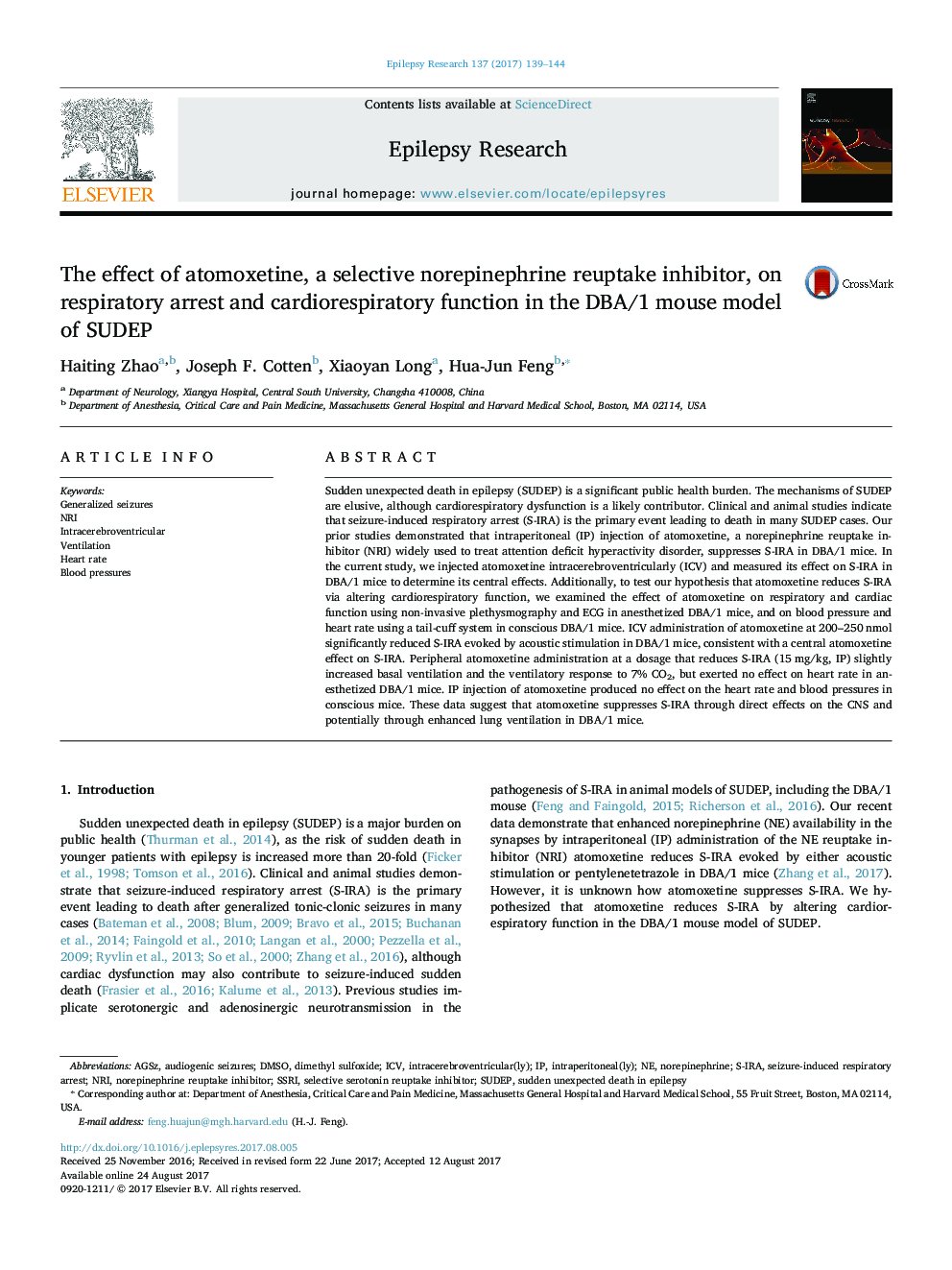| Article ID | Journal | Published Year | Pages | File Type |
|---|---|---|---|---|
| 5628658 | Epilepsy Research | 2017 | 6 Pages |
â¢Atomoxetine administered into the brain reduces S-IRA.â¢Atomoxetine enhances lung ventilation.â¢Atomoxetine exerts no effect on heart rate and blood pressures.
Sudden unexpected death in epilepsy (SUDEP) is a significant public health burden. The mechanisms of SUDEP are elusive, although cardiorespiratory dysfunction is a likely contributor. Clinical and animal studies indicate that seizure-induced respiratory arrest (S-IRA) is the primary event leading to death in many SUDEP cases. Our prior studies demonstrated that intraperitoneal (IP) injection of atomoxetine, a norepinephrine reuptake inhibitor (NRI) widely used to treat attention deficit hyperactivity disorder, suppresses S-IRA in DBA/1 mice. In the current study, we injected atomoxetine intracerebroventricularly (ICV) and measured its effect on S-IRA in DBA/1 mice to determine its central effects. Additionally, to test our hypothesis that atomoxetine reduces S-IRA via altering cardiorespiratory function, we examined the effect of atomoxetine on respiratory and cardiac function using non-invasive plethysmography and ECG in anesthetized DBA/1 mice, and on blood pressure and heart rate using a tail-cuff system in conscious DBA/1 mice. ICV administration of atomoxetine at 200-250Â nmol significantly reduced S-IRA evoked by acoustic stimulation in DBA/1 mice, consistent with a central atomoxetine effect on S-IRA. Peripheral atomoxetine administration at a dosage that reduces S-IRA (15Â mg/kg, IP) slightly increased basal ventilation and the ventilatory response to 7% CO2, but exerted no effect on heart rate in anesthetized DBA/1 mice. IP injection of atomoxetine produced no effect on the heart rate and blood pressures in conscious mice. These data suggest that atomoxetine suppresses S-IRA through direct effects on the CNS and potentially through enhanced lung ventilation in DBA/1 mice.
